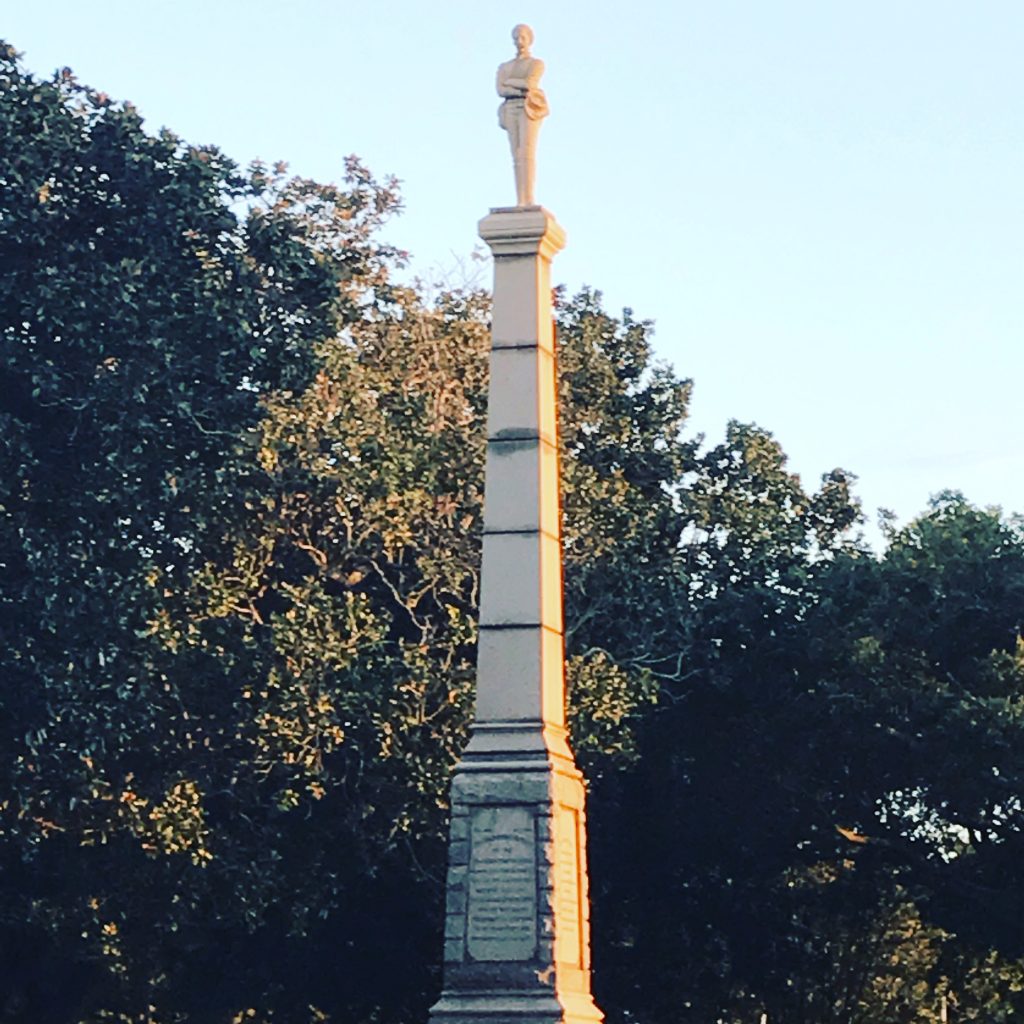With Confederate monuments being removed around the South, people are beginning to talk about removing the city’s monument to the Confederate soldiers who died during the Civil War.
Mayor Ashton Hayward said on News Radio 1620 this morning that he would remove the monument if it were up to him. However, a law was passed in 2010 that established a committee process that needed to be followed.
“A great nation doesn’t hide its history,” said the mayor. “It faces its flaws and corrects them. We’ve been around the clock looking at this.”
He continued, “We’re examining this law right now that’s on the books right now. It mentions about having a committee when you change monuments and change the description.”
Mayor Hayward reminded the listeners that he removed the Confederate flag from the city’s displays. “I have a track record of coming out against this. As I said, diversity and inclusivity is what I’m all about and what our city’s all about.”
Host Andrew McKay asked, “What I thought I heard you just now say is that if it were just up to Ashton Hayward, you would remove that Confederate monument. Did I misunderstand you?”
Hayward replied, “No, you understood me correctly. I was moving towards that, and we had a meeting yesterday about what was on the books and on the law. I think it’s very important to obviously always follow the letter of the law. Our city attorney’s working on that right now, as we speak.”
Dr. Michael Butler, author of the book “Beyond Integration,” talked on “Pensacola Speaks” about the real meaning of the Confederate monuments, most of which were erected after Reconstruction ended.
“The historical record’s pretty clear on this. The reason that the statues were erected in the first place was to rewrite history,” Butler said. “They were put up to commemorate an idea of what is often called ‘Lost Cause’ mythology.”
The “Lost Cause” has four tenets:
- Extol valor of Confederate soldiers and identified Confederate defeat as the product of Union advantages in manpower and materials rather than their martial superiority;
- Declare that states’ rights had been the noble principle upon which the Confederacy was based;
- Proclaim Reconstruction a failed experiment in racial equality that was vindictively foisted upon white Southerners by a victorious Union; and
- Assert that Southern whites possessed a unique identity that gave the Confederacy enduring cultural power despite its defeat.
Butler said, “Whether or not you personally agree with the public display of Confederate imagery, it does divide our country. It means specific things to many different people, and has a tendency to still lead to violence.”
He believes that the City of Pensacola and Escambia County cut-off its discussions of Confederacy imagery, slavery and racism without ever resolving the issues. We talked about the race riots in 1974 at Escambia High School over the team name, “Rebels.”
“Escambia High became the ‘Gators,’ but the city never really came to an agreement that satisfied both sides of the argument,” said Butler. “What that means is you have delayed the issue until there are debates over the inclusion of the Confederate flag on the City of Five Flags stationary. Where does it fit in Pensacola’s history? We keep kicking this issue down the road instead of addressing it head on.”
Will Mayor Hayward lead a public discussion on the Confederate imagery and where Confederacy fits in the city’s history?
It needs to be done outside of a city council meeting, where the rules discourage public comments.
